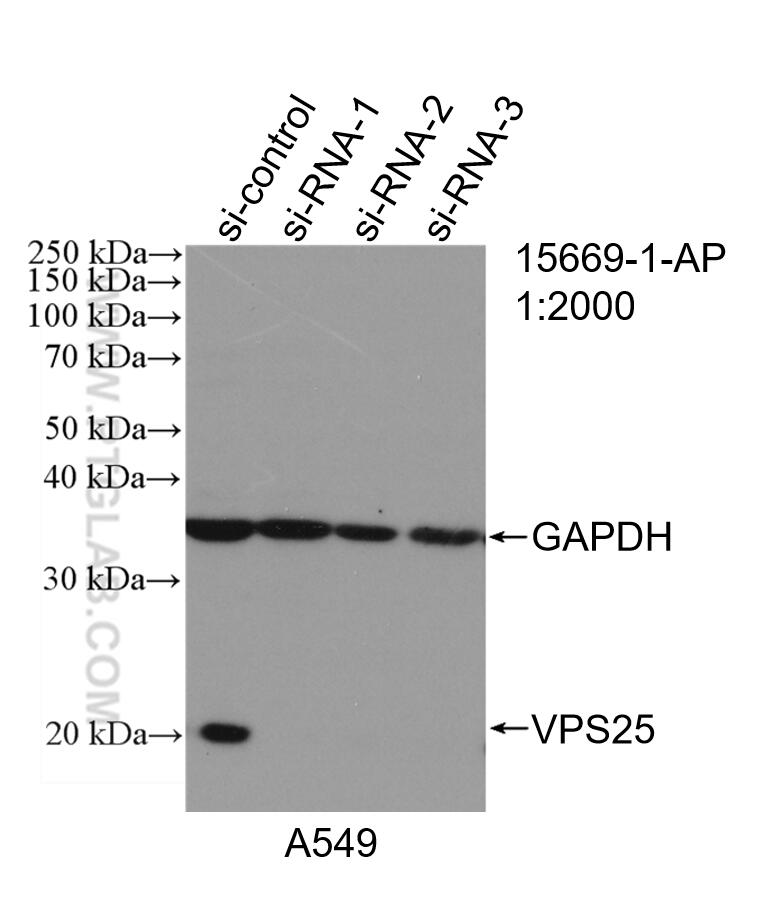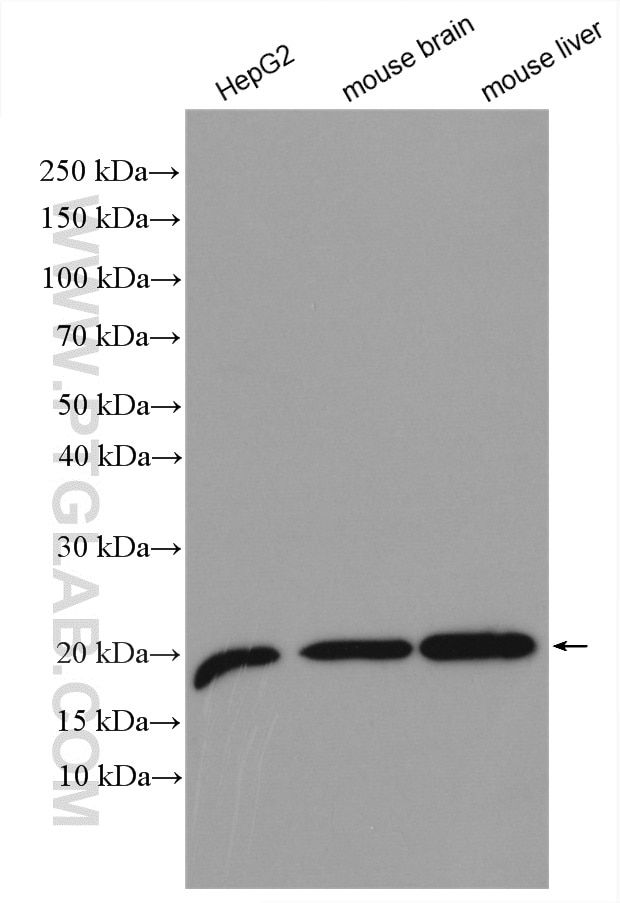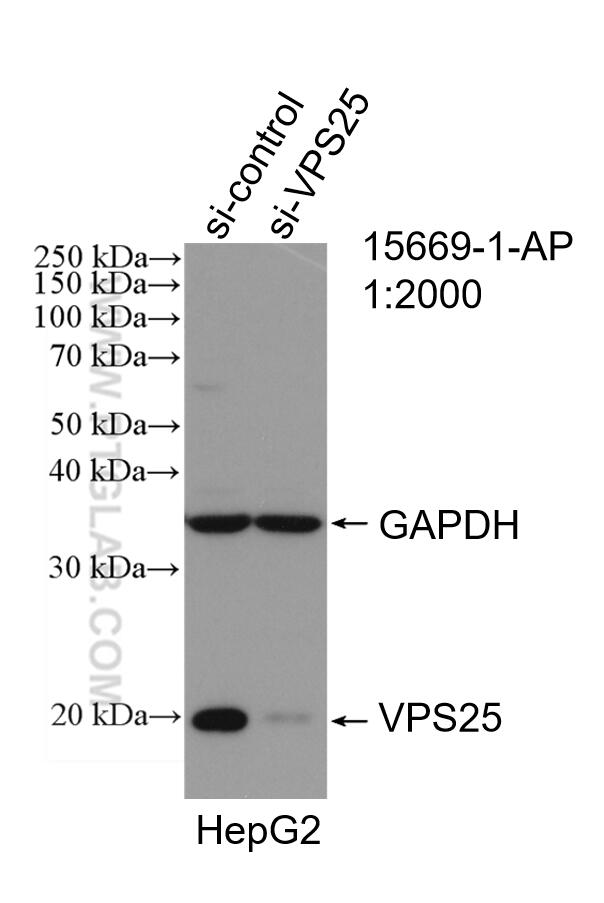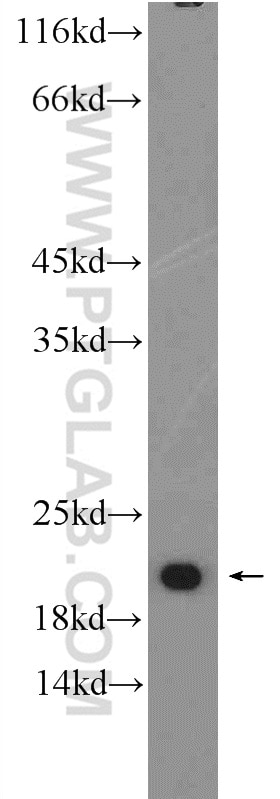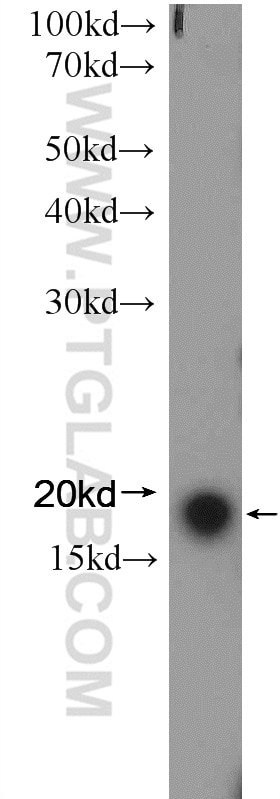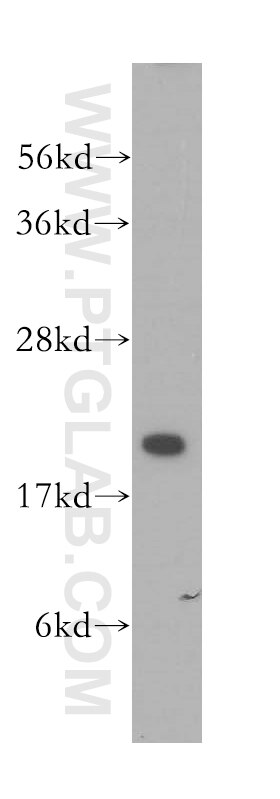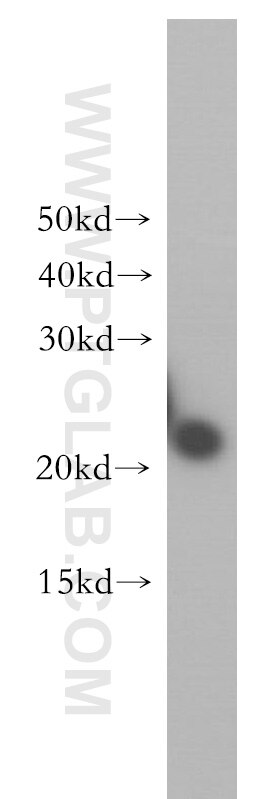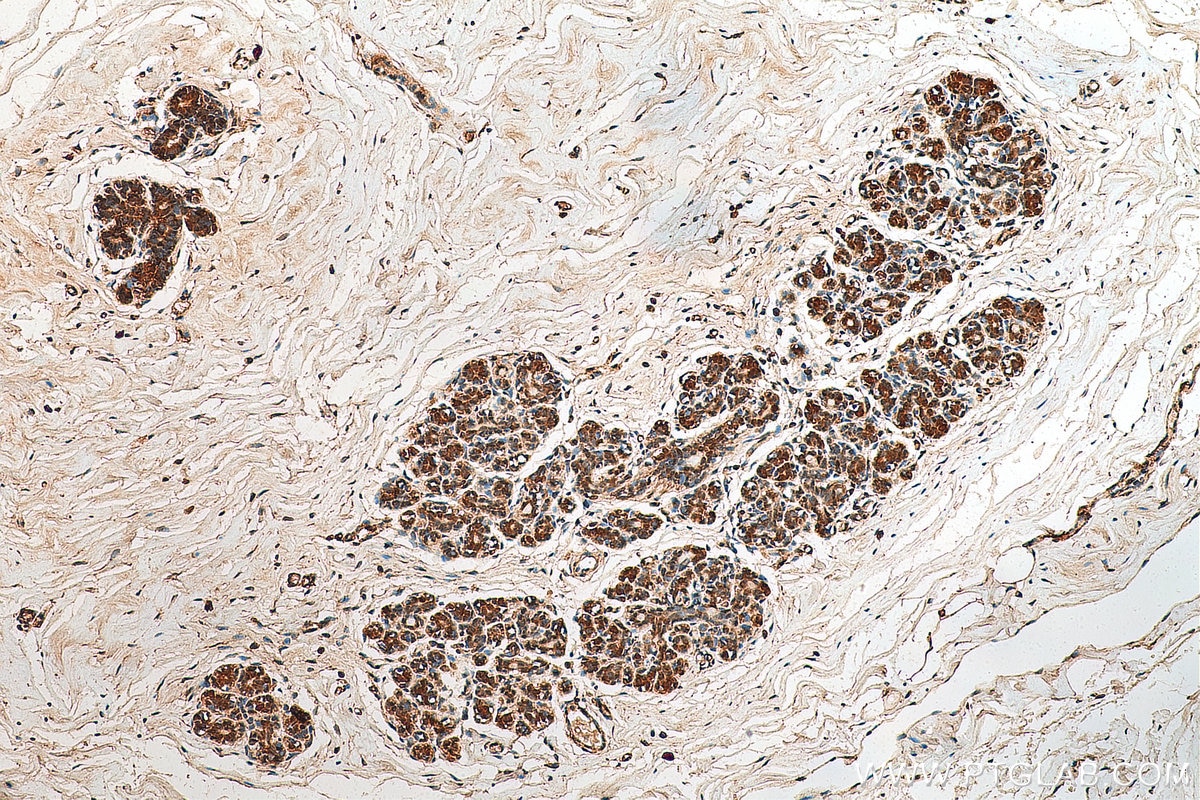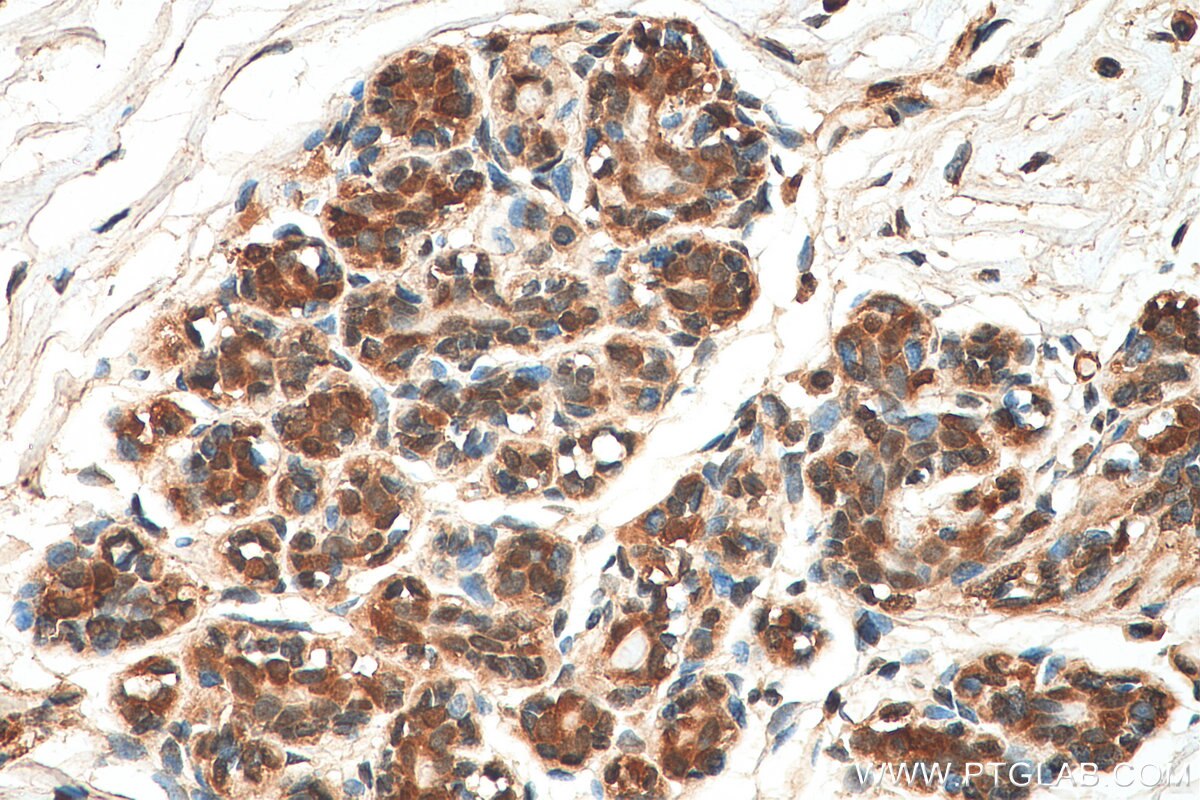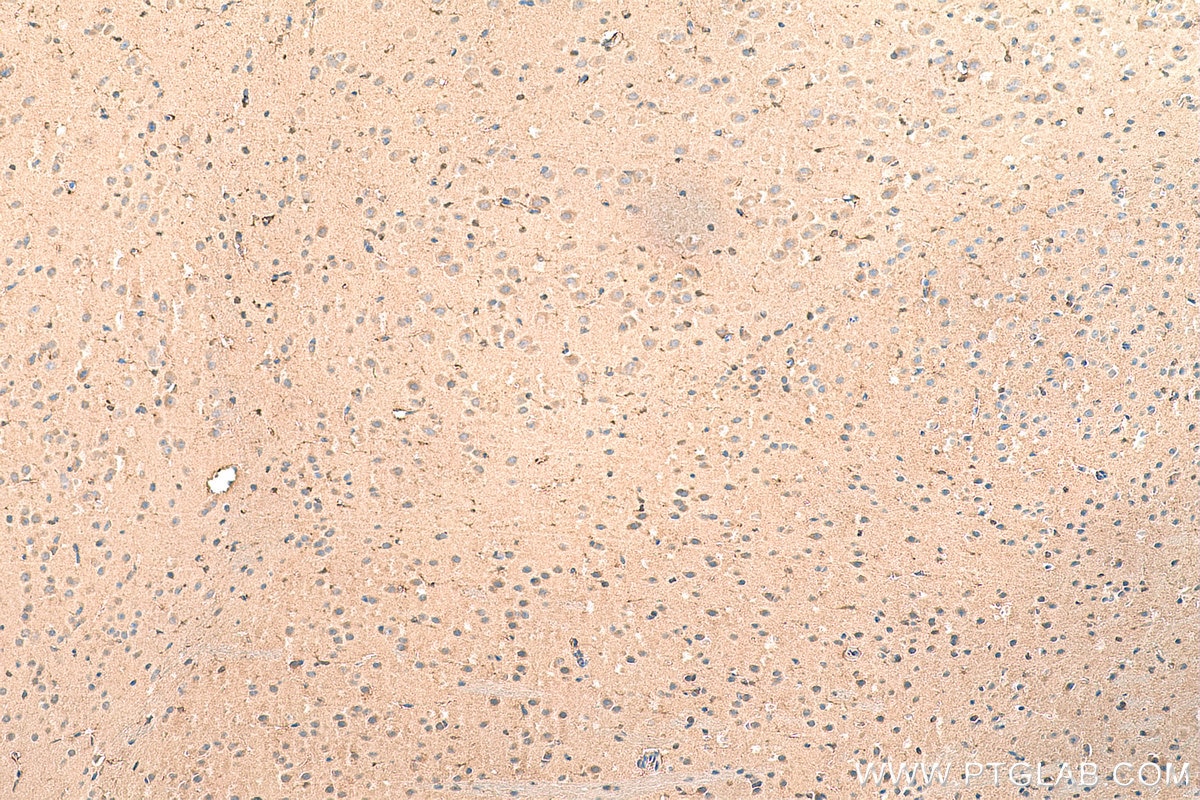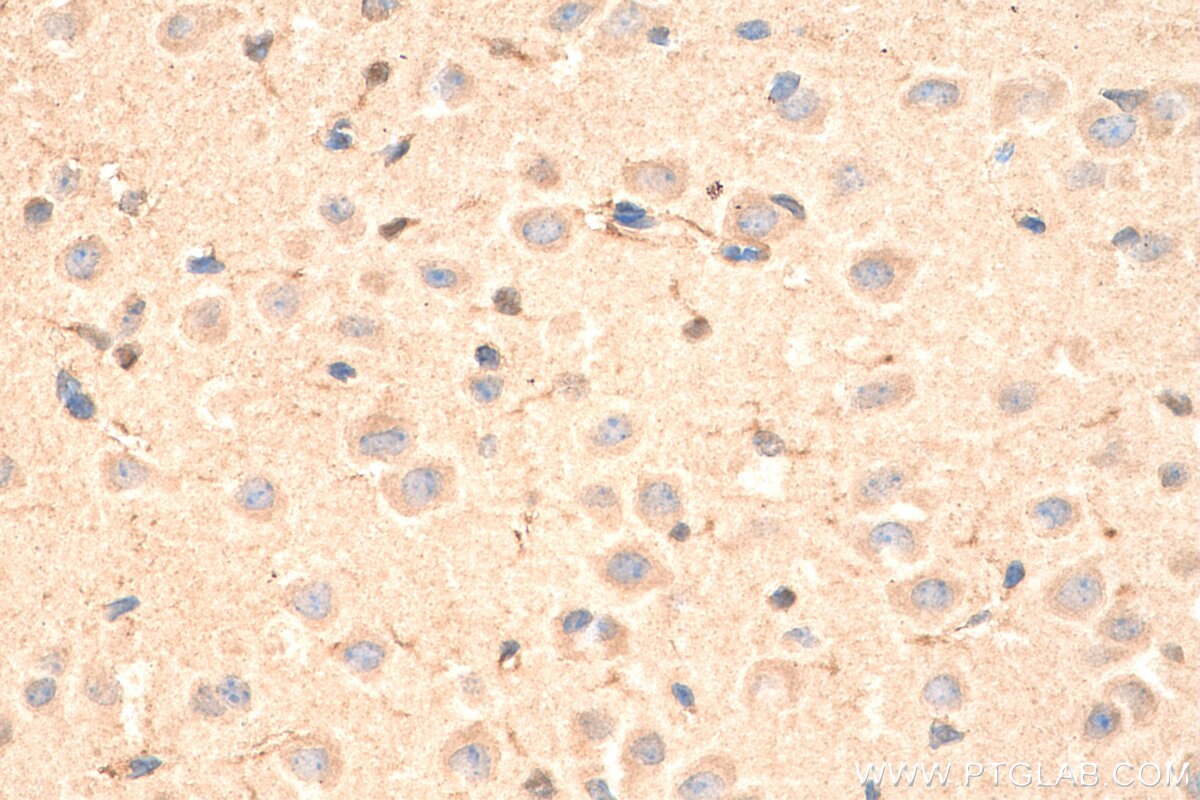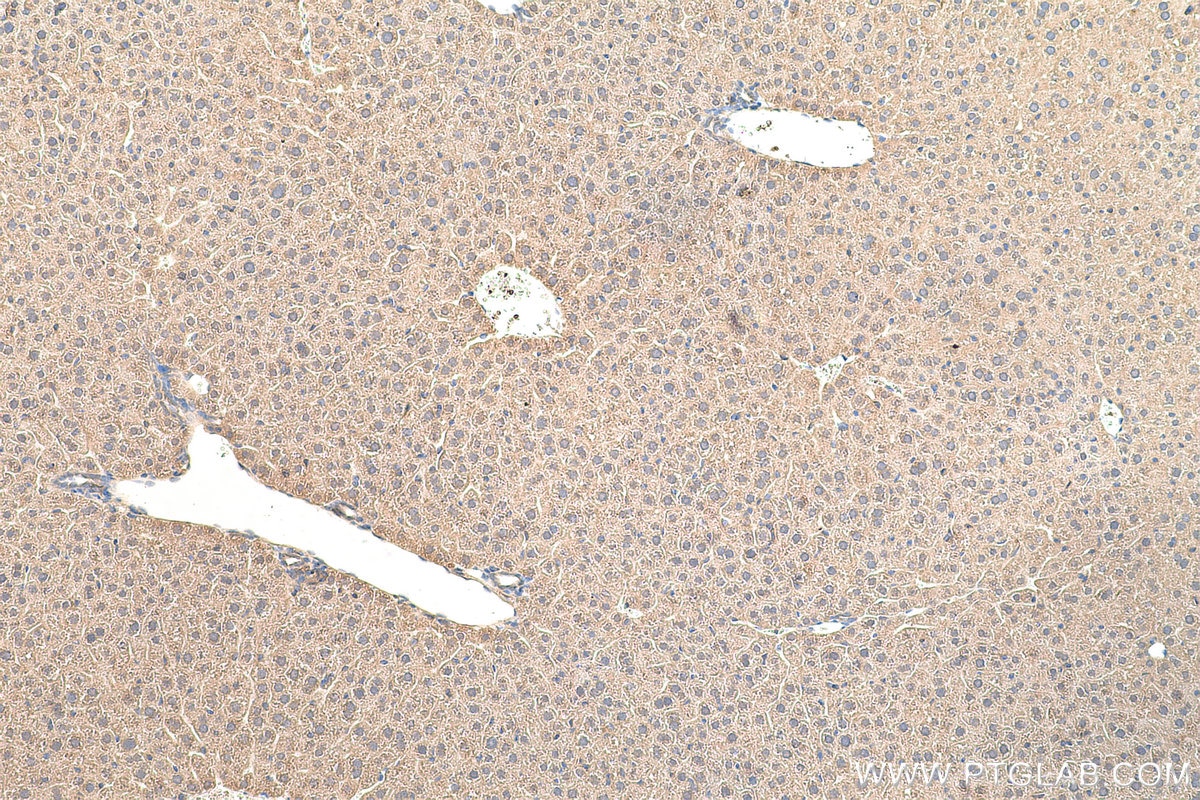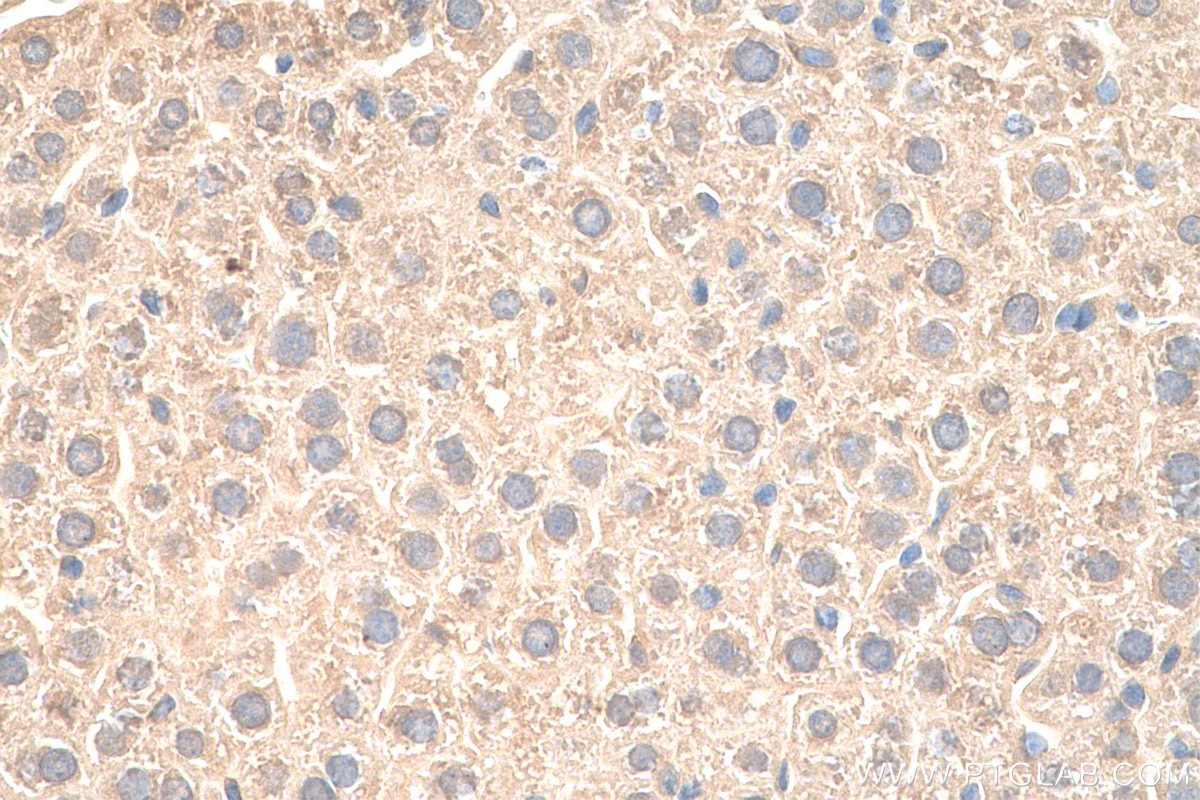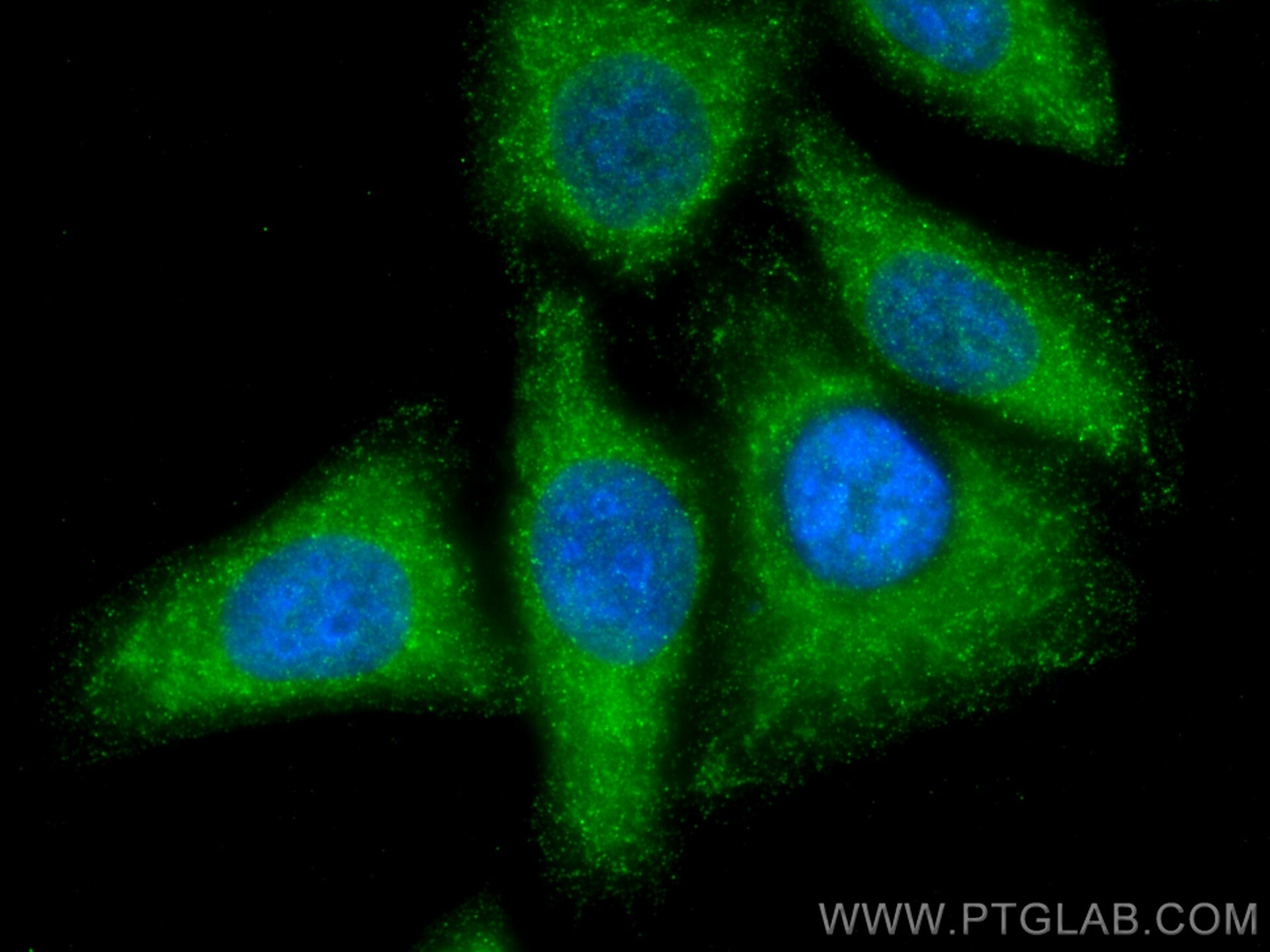- Featured Product
- KD/KO Validated
VPS25 Polyklonaler Antikörper
VPS25 Polyklonal Antikörper für WB, IHC, IF/ICC, ELISA
Wirt / Isotyp
Kaninchen / IgG
Getestete Reaktivität
human, Maus, Ratte und mehr (2)
Anwendung
WB, IHC, IF/ICC, IP, ELISA
Konjugation
Unkonjugiert
Kat-Nr. : 15669-1-AP
Synonyme
Geprüfte Anwendungen
| Erfolgreiche Detektion in WB | HepG2-Zellen, A549-Zellen, HeLa-Zellen, humanes Hirngewebe, Maushirngewebe, Mauslebergewebe, Rattenlebergewebe |
| Erfolgreiche Detektion in IHC | humanes Mammakarzinomgewebe, Maushirngewebe, Mauslebergewebe Hinweis: Antigendemaskierung mit TE-Puffer pH 9,0 empfohlen. (*) Wahlweise kann die Antigendemaskierung auch mit Citratpuffer pH 6,0 erfolgen. |
| Erfolgreiche Detektion in IF/ICC | HepG2-Zellen |
Empfohlene Verdünnung
| Anwendung | Verdünnung |
|---|---|
| Western Blot (WB) | WB : 1:500-1:2000 |
| Immunhistochemie (IHC) | IHC : 1:50-1:500 |
| Immunfluoreszenz (IF)/ICC | IF/ICC : 1:50-1:500 |
| It is recommended that this reagent should be titrated in each testing system to obtain optimal results. | |
| Sample-dependent, check data in validation data gallery | |
Veröffentlichte Anwendungen
| KD/KO | See 4 publications below |
| WB | See 8 publications below |
| IHC | See 2 publications below |
| IF | See 3 publications below |
| IP | See 1 publications below |
Produktinformation
15669-1-AP bindet in WB, IHC, IF/ICC, IP, ELISA VPS25 und zeigt Reaktivität mit human, Maus, Ratten
| Getestete Reaktivität | human, Maus, Ratte |
| In Publikationen genannte Reaktivität | human, Hausschwein, Hund, Maus |
| Wirt / Isotyp | Kaninchen / IgG |
| Klonalität | Polyklonal |
| Typ | Antikörper |
| Immunogen | VPS25 fusion protein Ag8134 |
| Vollständiger Name | vacuolar protein sorting 25 homolog (S. cerevisiae) |
| Berechnetes Molekulargewicht | 176 aa, 21 kDa |
| Beobachtetes Molekulargewicht | 21 kDa |
| GenBank-Zugangsnummer | BC006282 |
| Gene symbol | VPS25 |
| Gene ID (NCBI) | 84313 |
| Konjugation | Unkonjugiert |
| Form | Liquid |
| Reinigungsmethode | Antigen-Affinitätsreinigung |
| Lagerungspuffer | PBS with 0.02% sodium azide and 50% glycerol |
| Lagerungsbedingungen | Bei -20°C lagern. Nach dem Versand ein Jahr lang stabil Aliquotieren ist bei -20oC Lagerung nicht notwendig. 20ul Größen enthalten 0,1% BSA. |
Hintergrundinformationen
VPS25 is a component of the endosome-associated complex ESCRT-II (Endosomal Sorting Complexes Required for Transport protein II). ESCRT-II complex, composed of VPS25, VPS36, and SNF8, functions in sorting of ubiquitinated membrane proteins during endocytosis. ESCRT-II complex is probably involved in the recruitment of the ESCRT-III complex. VPS25 is highly conserved. Human VPS25 gene maps to chromosome 17q21.31 and is expressed in a wide range of tissues (PMID: 16889659).
Protokolle
| PRODUKTSPEZIFISCHE PROTOKOLLE | |
|---|---|
| WB protocol for VPS25 antibody 15669-1-AP | Protokoll herunterladen |
| IHC protocol for VPS25 antibody 15669-1-AP | Protokoll herunterladenl |
| IF protocol for VPS25 antibody 15669-1-AP | Protokoll herunterladen |
| STANDARD-PROTOKOLLE | |
|---|---|
| Klicken Sie hier, um unsere Standardprotokolle anzuzeigen |
Publikationen
| Species | Application | Title |
|---|---|---|
Nat Cell Biol Endosomal membrane tension regulates ESCRT-III-dependent intra-lumenal vesicle formation. | ||
Nat Commun Mechanism of Ca²⁺-triggered ESCRT assembly and regulation of cell membrane repair. | ||
Curr Biol A Septin Double Ring Controls the Spatiotemporal Organization of the ESCRT Machinery in Cytokinetic Abscission. | ||
PLoS Pathog Cellular ESCRT components are recruited to regulate the endocytic trafficking and RNA replication compartment assembly during classical swine fever virus infection. |
Rezensionen
The reviews below have been submitted by verified Proteintech customers who received an incentive for providing their feedback.
FH Viviana (Verified Customer) (04-27-2022) | It works very well for WB (1:1000, KD validated) and for IP (2 ug, endogenous protein).
|
